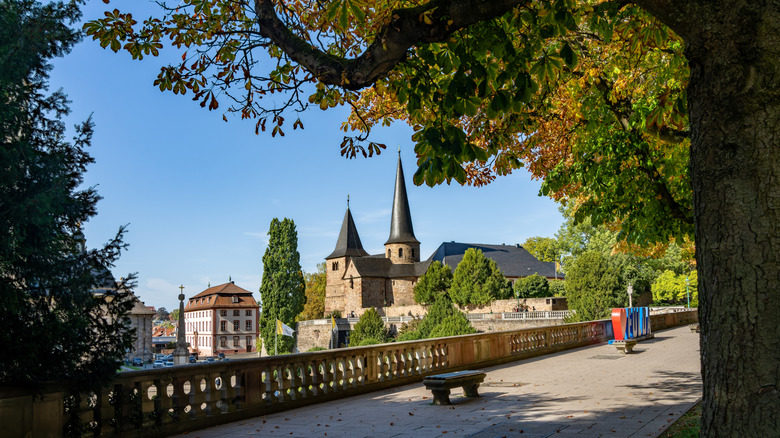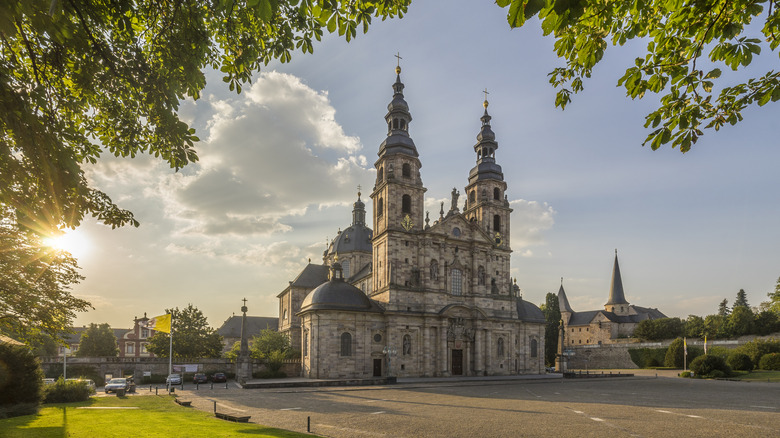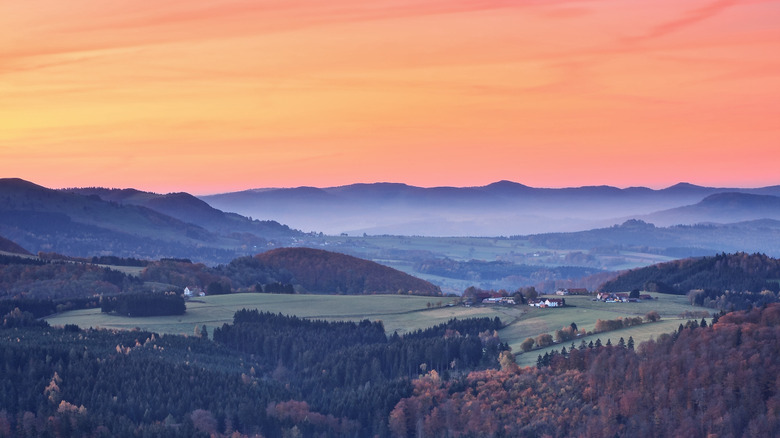Nestled In The Mountains Of Germany Is A Picturesque City Rich In Religious History
There's a tourist trail in Germany called the Fairy Tale Route, and it's just what you're picturing: green valleys, dark forests, castles and churches, charming towns, village festivals, and even the birthplace of the Brothers Grimm. This road is one of the best ways to take in the scenic beauty of Germany, especially if you're looking for a hefty dose of rich cultural experiences and history, too (and what tourist isn't, in Germany?).
A short detour off the Fairy Tale Route leads you to the historic city of Fulda, in the German state of Hesse, surrounded by the lush Rhön Mountains and bordered by the Fulda River. Most famous for its religious architecture, the highlight of Fulda is the double-spired Fulda Cathedral, along with a monastery and several venerable churches. The town also boasts easy access to outdoor recreation, several palaces, signature German half-timbered houses, and a historic Old Town.
A town that started as an abbey
Fulda began life as a Benedictine abbey in the year A.D. 744. The abbey gained ground as one of the principal centers of European education in the Middle Ages, and as it grew, so did the town around it. Fulda was officially chartered as a town in 1157 and has enjoyed a long and storied history, as its strategic location near Frankfurt makes it a crossroads for people, manufacturing, and the military. The nearby Fulda Gap was once used by Napoleon Bonaparte as an invasion route, and during the Cold War, it was the most heavily armored place on the planet. Fulda was also the site of a Romani forced labor camp during World War II. Nowadays, Fulda, population 68,000, is a thriving little European city ideal for history buffs, with some of the lowest unemployment rates in Germany.
The main sites of Fulda are split into two parts: the Baroque quarter (the area around the 18th-century Fulda Cathedral) and the Old Town. Fulda is also known for its green spaces, such as the rose garden outside the Fulda Cathedral. Near the cathedral, you can visit the ancient St. Michael's Church (circa A.D. 822) and the Fulda Stadtschloss (City Palace) with historically reproduced rooms. In the Old Town, you'll find the signature German half-timbered houses, the lively main square, and the town's best restaurants. Walking the narrow streets, you can also see a few relics from the medieval city walls, including the ancient Hexenturm (Witches' Tower) and the beautiful Old Town Hall (Altes Rathaus Fulda).
The mountains surrounding Fulda
Not only is Fulda home to some of the world's most awe-inspiring places of worship, but it's also surrounded by the picturesque Rhön Mountains. Designated the Rhön Biosphere Reserve by UNESCO, this "land of endless horizons" (Land der offenen Fernen) protects hundreds of acres in the German states of Hesse, Bavaria, and Thuringia. The reserve also holds the Rhön Dark Sky Reserve, an area established in 2014 by DarkSky International to eliminate nighttime light pollution and restore the night environment. Rhön is one of the best places in Germany for stargazing, thanks to these ideal night sky conditions.
Get out of town for some world-class hiking or cycling in the Rhön, or venture out after dark for stargazing. On a clear night, you may be able to spot the Andromeda Galaxy, which, at 2.5 million light-years away, is the farthest object the human eye can see in the night sky without a telescope. The tallest peak in the Rhön Mountains, Wasserkuppe, the "cradle of gliding," and the epicenter for the sport (complete with a museum on the mountain), if you're an enthusiast or just want to spike your adrenaline. After the rush of gliding (or snowkiting and skiing in the winter), wind down in one of the region's eight spa towns.


